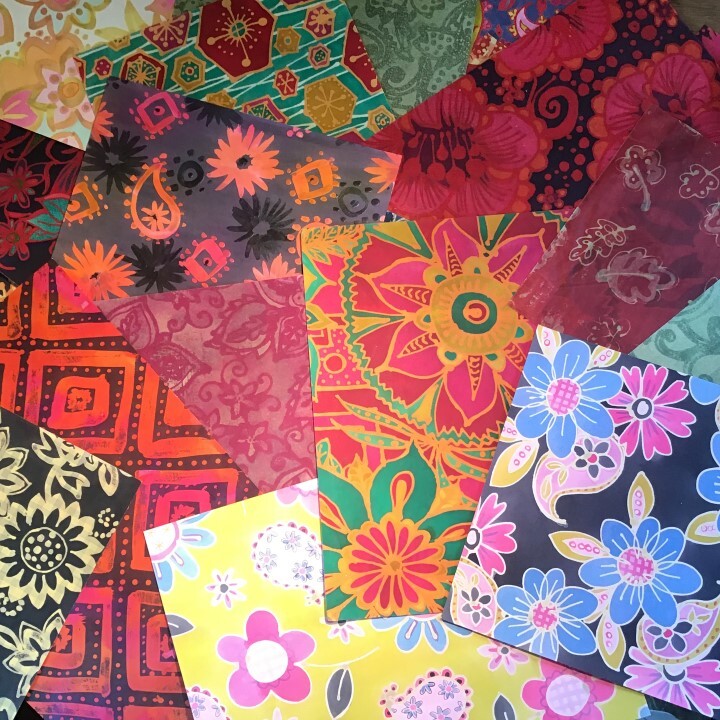|
If you were to ask people what batik was they would probably say it was a fabric technique using wax resist. The melted wax is either painted onto fabric or a tool called a tjanting is used to draw a line of wax onto the fabric. This then act as a resist once the fabric is dyed. I love batik and have always found the process fascinating, the unpredictability of the process, you never know what the outcome is going to be . If you were to ask people what batik was they would probably say it was a fabric technique using wax resist.
The melted wax is either painted onto fabric or a tool called a tjanting is used to draw a line of wax onto the fabric. This then act as a resist once the fabric is dyed. I love batik and have always found the process fascinating, the unpredictability of the process, you never know what the outcome is going to be . I first came across it while at college studying textiles. When I became a freelance designer, I used batik to produce some of my first commercial print designs . My designs were produced on paper rather than fabric resulting in bright vibrant designs that everyone loved, great for anything from swimwear to mens boxer shorts for M and S ! You can use any paper to work on: cartridge, watercolour, sugar paper, newsprint and handmade papers, all create a different look. Once the paper is stretched and dried you can either colour the paper with inks or apply the wax onto the paper as it is. I quite often colour my paper before applying the wax so that the wax line appears to be coloured. I then use bleach to remove the colour from the paper or you can simply use darker colours over the top. Once this is dry, you can start to colour in the image, a process which I have always found to be very absorbing and relaxing. Alternatively, you can keep adding more wax and more colour , there are no rules and it is fun to experiment, sometimes a happy accident can be your best work ! Once framed these pieces look amazing or alternatively you can cut them up to create unique greetings cards. Learn how to do this at Art in The Barn on Monday 24th June on the Beautiful Batiks Workshop
0 Comments
Leave a Reply. |
AuthorAlison Butler, Artist, Designer and Course Instructor Archives
March 2023
Categories |

 RSS Feed
RSS Feed